
Tribal Druid & Native
-
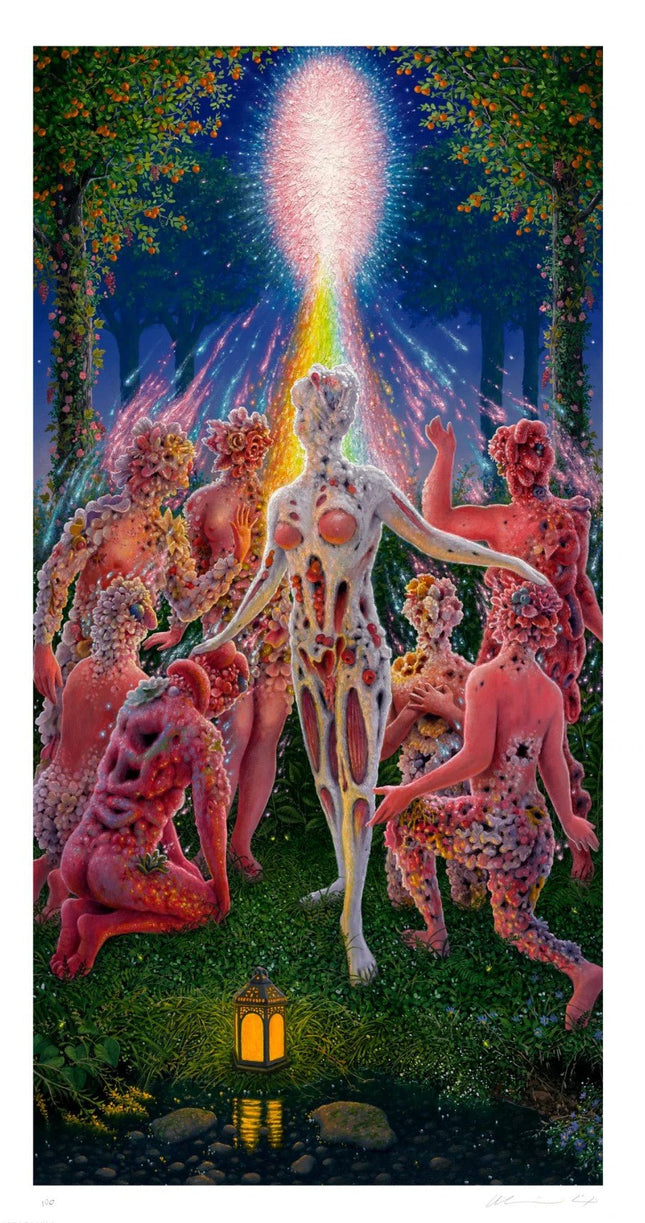
Adrian Cox The Sacrifice of Color... Archival Print by Adrian Cox
The Sacrifice of Color... Archival Pigment Fine Art Limited Edition Print on 290gsm Moab Entrada Paper by Artist Adrian Cox, Street Pop Art Graffiti Legend. 2022 Signed & Numbered Edition of 100- 13x24 Adrian Cox is a contemporary artist known for his paintings that often incorporate themes of mythology, surrealism, and the interconnectedness of beings and nature. "The Sacrifice of Color," is a piece that also exhibit elements of Cox's signature style. An archival print is a high-quality reproduction of an original work of art, created using advanced printing technology to ensure that the colors and details of the original piece are accurately captured. These prints are made using acid-free, archival-grade materials, which ensure that they will not fade or degrade over time, preserving the artwork's beauty for future generations.
$291.00
-
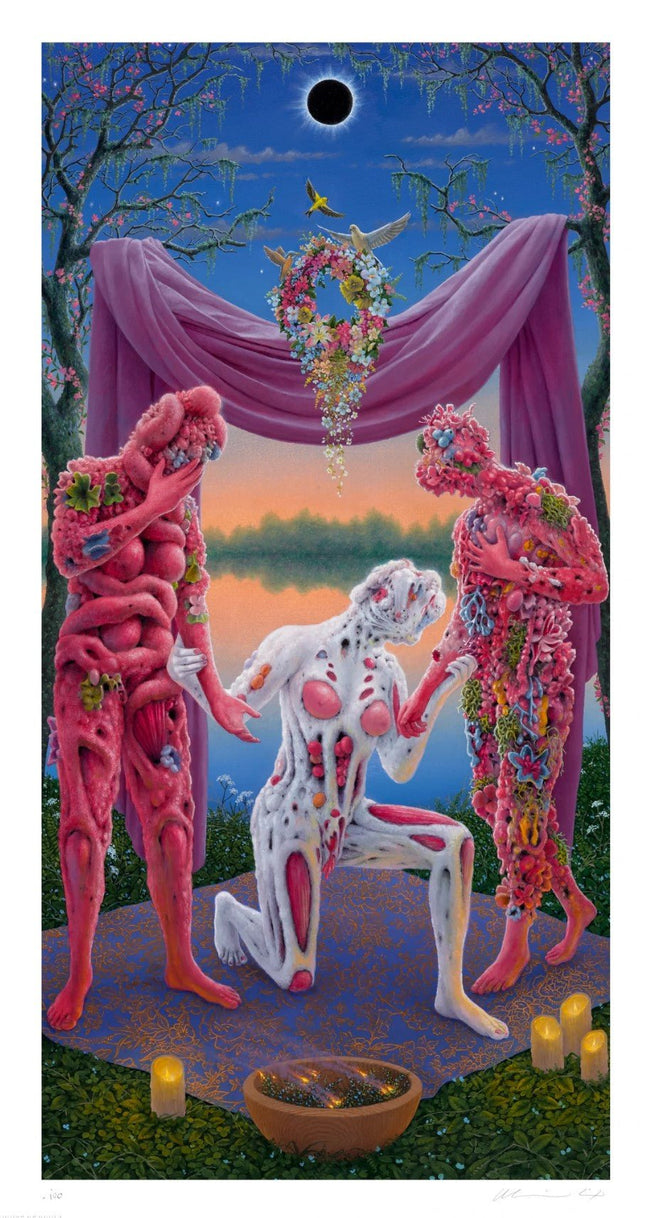
Adrian Cox Healer Veiled Archival Print by Adrian Cox
Healer Veiled Archival Pigment Fine Art Limited Edition Print on 290gsm Moab Entrada Paper by Artist Adrian Cox, Street Pop Art Graffiti Legend. 2022 Signed & Numbered Edition of 100- 13x24
$291.00
-

Swoon- Caledonia Curry Medusa Archival Print by Swoon- Caledonia Curry
Medusa Archival Print by Swoon- Caledonia Curry Limited Edition on 250gsm Hahnemühle Fine Art Paper Pop Graffiti Street Artist Modern Artwork. 2024 Signed & Numbered Print Limited Edition of 50 Artwork Size 13x19 Archival Pigment Fine Art “Medusa. I’ve always loved her. Before I knew much about her, I instinctively relished her as one of the few lasting representations of female power. But like any lasting symbol her story is complex. Violation, rage, and finally the Pegasus being born out of her decapitated neck. Her name comes from the Ancient Greek word for protector. Even in death something triumphant in her arises.” - Swoon Medusa by Caledonia Curry Swoon Street Pop Art & Graffiti Artwork The 2024 limited edition Medusa archival print by Caledonia Curry, known globally under the artist name Swoon, stands as a commanding statement in the evolution of Street Pop Art & Graffiti Artwork. Rendered on 250gsm Hahnemühle fine art paper, this 13x19 inch piece exemplifies Swoon’s ability to bring mythological, emotional, and sociopolitical narratives into a contemporary visual framework. Signed and numbered in an edition of only 50, this artwork captures both the hand-touched intimacy of Swoon's paper cut-out legacy and the permanence of museum-quality archival pigment printing. Medusa, long a symbol of feminine power and transformation, is not only visually stunning but layered with historical meaning and modern reinterpretation through Swoon’s lens. Symbolism and Form in Swoon’s Medusa The figure of Medusa, classically known from Greek mythology, takes on a new dimension through Swoon’s intricate linework and multi-layered design. The piece fuses illustrative portraiture with a swirling ecosystem of botanical, animalistic, and organic forms that seem to emerge from the face itself. There is a visual transition from solidity to abstraction that mimics metamorphosis. The hybrid elements—snakes, feathers, and anatomical structures—serve not only as decorative complexity but as conceptual nodes, referencing violation, resistance, and regeneration. This version of Medusa is neither monstrous nor victimized but sculpted into a protector figure recontextualized for the modern street art audience. The original art’s composition, pasted on a weathered wooden door, is translated faithfully in the print, preserving the raw texture and emotional weight of the original. Swoon’s Narrative Approach to Street Pop Art Caledonia Curry, based in the United States, is one of the most respected and pioneering voices in Street Pop Art & Graffiti Artwork. Her practice uniquely blends traditional printmaking techniques with public art and site-specific installations. The Medusa piece aligns with Swoon's longstanding commitment to exploring the roles of women, trauma, ancestry, and healing in public spaces. Unlike conventional graffiti rooted in letterform and tagging, Swoon’s work carries a narrative depth rarely found in urban art. Her choice of subjects often reflects underrepresented voices and ancient iconographies reborn through the language of modern activism. In Medusa, Swoon reconnects ancient mythology to contemporary discourse on agency, survival, and artistic defiance. Collectible Art in the Evolution of Graffiti-Based Printmaking This print release contributes to the growing recognition of graffiti-based work within collectible fine art. Swoon has long advocated for creating affordable art editions that maintain authenticity while reaching a wider audience. The Medusa archival pigment print not only affirms her relevance within contemporary art circles but also serves as an educational artifact, inviting viewers to understand graffiti and street art not as vandalism but as a complex and evolving cultural force. As a limited edition from 2024, it bridges the world of ephemeral wheatpastes and walls with the permanence of high-end paper-based work, establishing itself as a cornerstone within Swoon's expanding canon.
$550.00
-
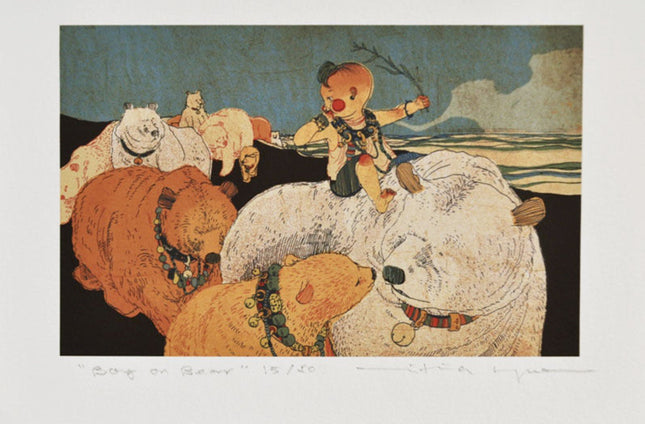
Victo Ngai Boy on Bear Giclee Print by Victo Ngai
Boy on Bear Artwork Giclee Limited Edition Fine Art Print on 100% Cotton Hahnemühle Museum Etching Paper by Pop Culture Graffiti Artist Victo Ngai. Limited edition of 50. Signed and numbered. Due to how this artwork was made and stored by the artist, many of Ngai's older prints contain slight yellowing to the extreme upper and lower white margin that extends about 1mm. This does not effect the image at all and the prints are perfect besides this.
$262.00
-
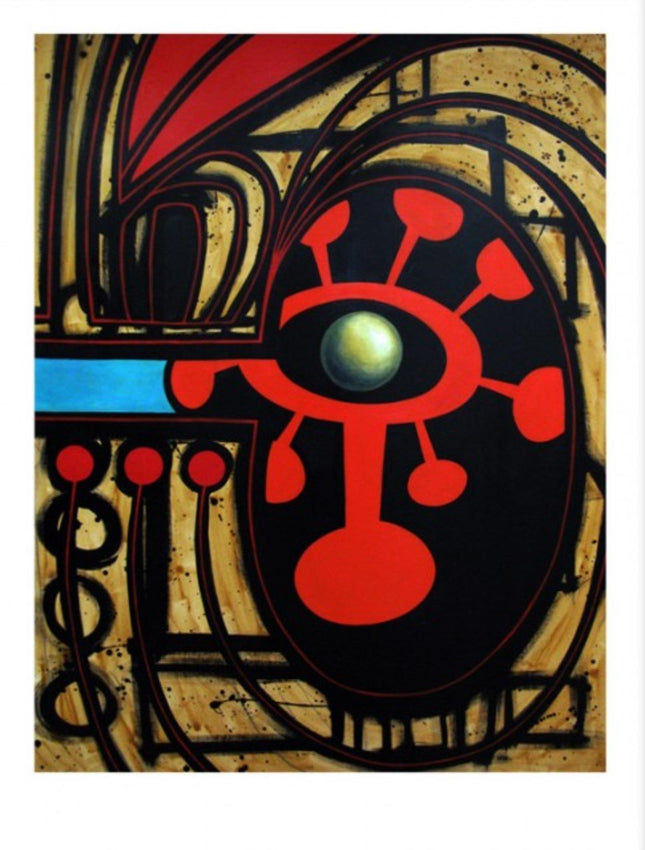
Carl F.K. Pao Kupuna Maka Archival Print by Carl F.K. Pao
Kupuna Maka Limited Edition Archival Pigment Prints on 310gsm Bright White Fine Art Paper by Carl F.K. Pao Graffiti Street Artist Modern Pop Art. "This print is of an original painting from my most recent solo exhibit during the month of November at the Mahoa Gallery, Honolulu.Maka is a Hawaiian word with numerous meanings, but is more known as the meaning of the eye(s) of a face."
$217.00
-
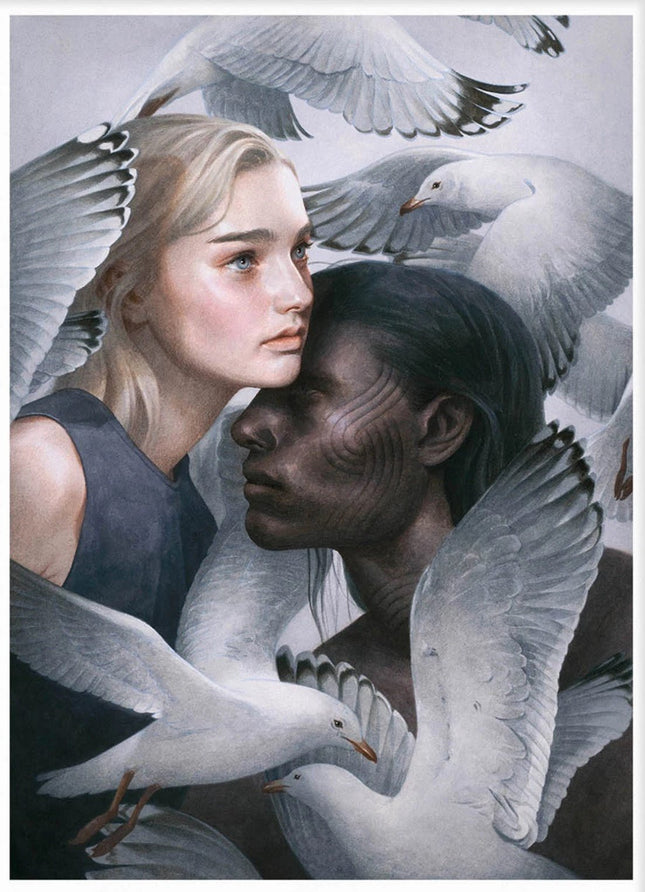
Tran Nguyen Miranda and Caliban Giclee Print by Tran Nguyen
Miranda and Caliban Artwork Giclee Limited Edition Print on 310gsm Museum-Grade Archival Paper by Pop Culture Graffiti Artist Tran Nguyen. Miranda and Caliban by Tran Nguyen Fine-art Giclée print on Canson Aquarelle 310gsm museum-grade archival paper 13 x 18 inches Limited Edition of 75 Signed & Numbered Printed with ♥ by Static Medium "I often paint figures enveloped by nature such as birds. I'm interested in the relationship between the two and how they co-exist with one another on the picture plane." -Tran Nguyen
$218.00







